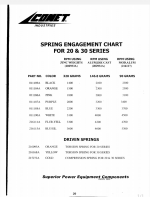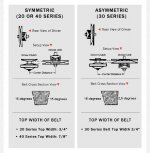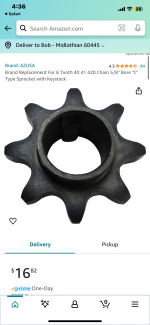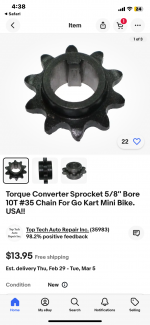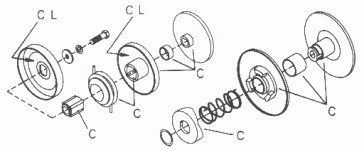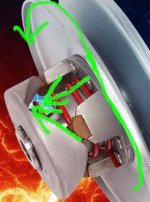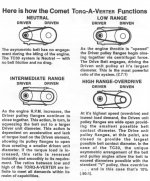I was speaking of a generic variable pulley system.
If belt length is fixed and pulley center to center distance is fixed, you can’t make only one pulley a variable pulley. They both must be variable.
If one pulley gets bigger (larger OD, higher riding belt), the other must get smaller (smaller OD, lower riding belt).
Not speaking about the static sizes, but during the shifting process.
Words always getting in the way of ideas.
Right okay that makes more accurate sense. In the case of a 7" driven swap you just go to a bigger belt
So I guess my claim was that in order for the driven unit to open fully, the driver has to close fully.
Not entirely accurate, but close enough for government work. There are variables that come into play; specifically wear, belt stretch, and proper initial fitment.
RPM determines the centrifugal force on the weights that opposes the garter springs.
Correct.
However it is the physical mass of the weights that determines their sensitivity to said rpm, and the garter springs stiffness controls the allowable amount of responsiveness in both accelerating and decelerating rpms
I guess the spring in the driven unit and the torque load determine the “shape” of the system and the force on the weights only closes the driver unit as much as allowed by the driven unit.
That's pretty much spot on. The driver decides what power of rpm goes out... but the driven decides at what speed that gets sent through the driveline to the wheel
I’m just having a hard time not seeing all the forces in the whole system.
The more compressed the driven spring is, the more stretched the garter springs will be. But I suppose that past a certain engagement rpm, the garter springs are insignificant vs the other forces.
Think of the garter springs as more of a leash, and the weights as more of a big dog trying to chase a squirrel... You can't stop the big fool, but you can keep him somewhat controlled.
I would think too stiff of garter springs would be an issue. Keeping in mind they control the responsiveness of the weights so if you mix and match to an engagement speed of let's say 3600, but your engine doesn't make power over 4k.... that's a dumbass mistake because you'd need to be reved damn near to peak power before it bites. That just comes down to how much power your engine makes, and the rpm it's peaking at though.
I've not had any serious issues with running full default on a TC, most of my issues have come back to other driveline issues after the fact (eg cheap belts, over geared, bad alignment, bad bearings)
I mentioned the yellow driven spring being relatively bad for belts, but there IS a small caveat. If you live in a dominantly flat region where even hills are few... it's that not bad with a good FD ratio for it to throw the power at.
My initial set up in NY was great (10/36) but was promptly a disaster in the mountains with winding roads so I'm now geared for the region (9/54) and have done a little more work to the engine itself.

